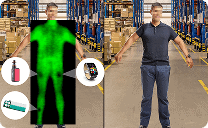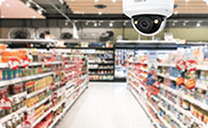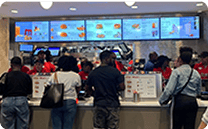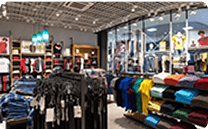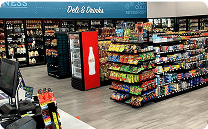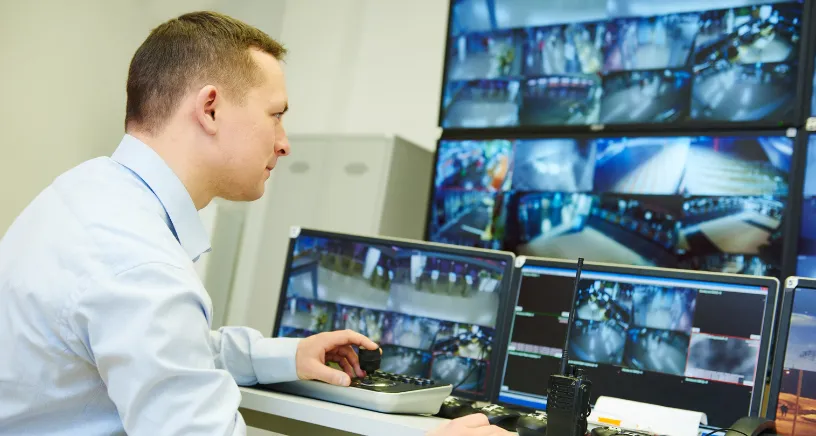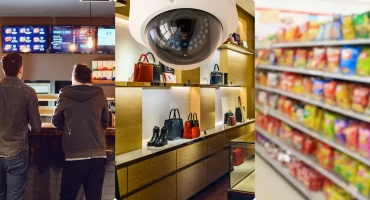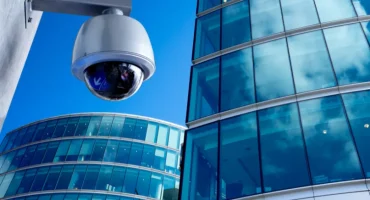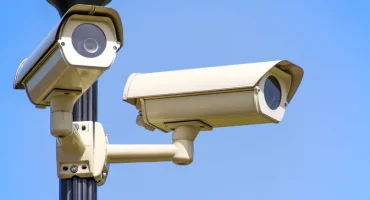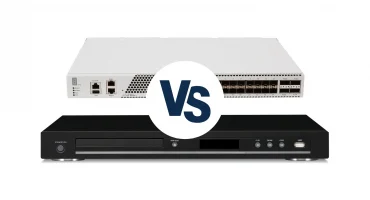In This article
Imagine if you never made changes in your business over, say, the last five years.
Maybe this looks like not accepting mobile payments that you can today, potentially alienating buyers who come in. Or you’re unable to upgrade your drive-thru to a dual-lane system, sending a ton of customers to your competitor whose lines look half as long. The list could go on.
Technology is changing so quickly for businesses that you’re doing yourself — and your business — a disservice by not regularly evaluating what changes you can make to improve operations.
This same idea goes for your video surveillance system. It can be easy to avoid making the switch. “It’s going to be a lot of work,” you think, and continue to accept what you have. But with the advancements that video surveillance has seen over the last decade, not upgrading is a complete disservice.
Let’s look at the evolution within the video surveillance world over the last ten years, and the signs to keep an eye for that are telling you it’s time to upgrade.
The Evolution of Video Surveillance
Over the past five decades, video surveillance has experienced a profound evolution. It began with analog systems and has evolved to the digital technology we see today, offering higher image quality and internet connectivity for remote access.
High-definition cameras have also significantly improved image clarity and flexibility, while video analytics powered by artificial intelligence have enabled automated event detection. Cloud-based storage solutions have also simplified data management for business owners, and integration with the Internet of Things (IoT) has made surveillance more interconnected. This transformation has not only enhanced security but also expanded the applications of video surveillance across various sectors, with ongoing advancements promising even more sophisticated solutions in the future.
“During the past 20 years of my career, video technology has evolved significantly, revolutionizing various industries and transforming the way we communicate, entertain, and work. The quality has improved, video is accessible right on mobile devices, insights are delivered from video right to business owners, and so much more. The way we use video was unimaginable in the early 2000s.”
- Mark Mullane, Senior Customer Success Manager at DTiQ
You may feel your cameras are working “well enough” for now, but you may be missing out. Here are 8 signs that it might be time to upgrade your video surveillance system — and what you’re missing out on by not.
1. Outdated Technology
The general rule of thumb is that you want to upgrade technology every 3-5 years on average. This keeps you on top of the technological trends while not costing you an arm and a leg to upgrade every time the latest and greatest comes out.
Video technology doesn’t have to be updated every three to five years, especially if you find a provider that will grow and update with you. However, if your current provider’s technology is outdated and no longer meets your security needs or offers advanced features, it might be time to consider a switch to a provider with more modern and capable systems.
So how do you know if the updated technology requires a switch? You can look at this in a two-fold approach — the hardware and the software.
Hardware
You’ve seen it in the media time and time again. Detectives or police looking at footage and it’s so grainy that there isn’t a single detail that you can make out.
While running your business may not make the footage in a cop show, it’s the same idea. You faced an incident of theft and are trying to find the footage, but you can’t make anything out of the images. How much good is that going to do for you?
New hardware also allows you to do more with less. For example, newer 360-degree cameras can cover the same amount of area that a standard four cameras can cover, and integrated servers allow for file sharing instead of having to retrieve footage locally during each incident. A little goes a long way when you’re using the correct hardware!
Software
With the right software, you don’t have to upgrade your actual physical cameras as often. This can be a huge win.
When you have a camera system that leverages software within your cameras, you can gain a lot more from footage. Some solutions can pair your video with your POS data, letting you see exact transactions as an overlay within your video. Imagine how much easier it will be tracking an order gone wrong with something like that!
You also typically just need to hit “update” to get the most from solutions that are advancing with your updated video surveillance improves. No need to replace cameras as often when your solution offers upgrades that are done right on the platform.
2. Limited Integrations
No matter your industry, chances are you have a booming tech stack. Imagine how much better your video surveillance system can run if it’s able to integrate with those other parts of your businesses!
Integrations can be the difference between your video surveillance system being just a video recorder and it being a fountain of actionable insights. When your video surveillance system integrates with your point of sale, for example, you can pair POS data directly with video footage. It’s a game changer!
And some surveillance solutions can be even more detailed. Fully customizable suites of reporting can help you see the insights you directly need by location, giving you actionable insights immediately.
If your current system doesn’t integrate well with other security or management systems you use, you might be missing out on efficiency and effectiveness gains that could be achieved through better integration.
3. Outdated User Interface
Everybody knows how easy it can be to pick up an iPhone and figure out how to use it. That all boils down to a solid user interface, something intuitive that is easy for just about anybody to use.
That level of usability is becoming the expectation across all technology, and your video surveillance system is no exception. It’s time to consider switching your provider if you find yourself pulling out the user manual every time you need to look footage up.
The user interface also goes far beyond the footage. Nowadays, everything is on your phone (seriously, what isn’t?). Having a mobile app that pairs with your video surveillance is a win, but having one that’s also easy to use is just golden. With an easy-to-use mobile app, you can check on your stores from literally anywhere in the world.
4. Lack of Storage Options
Your video surveillance footage is only as useful as it is accessible. Imagine you spend tens of thousands upgrading your system and getting the best cameras, only for the footage to disappear after a week. It would be useless.
You may need a new video surveillance system if your current system either has no storage options or super minimal storage capacity. You need to be able to keep your footage safe — at least footage that captures an incident.
A ton of payouts from injury happen because the business doesn’t have footage to prove otherwise. Say the average statute of limitations to sue is within two years, you need footage stored at least until then. Storage is key to keeping and using your video surveillance system to the most of its ability.
Pro tip: Review the statute of limitations for the states you are operating in and ensure you are keeping clips for that time. This can vary between states, so make sure you know exactly what the standards are in the states you’re operating in. Don’t bank on it being something you know from somewhere else — it can be a costly assumption.
5. Lack of Actionable Insights
A business owner could spend 24 hours a day watching video cameras, but it can be hard to decide what to do with said footage. And if you’re seeing things happen on the cameras with no idea how to action and improve them, your cameras are missing the mark.
A strong video surveillance provider can pull actionable insights. This can be done in the form of a dashboard, giving you insights into the speed of service, hourly performance, and so much more. And when you measure, you can improve.
Some providers can create audits of each location, providing actionable insights immediately for owners. The audits can serve as your 24/7365 unannounced visit, focused only on the areas of your business you need to focus on at each location. From there, you receive the overviews right to your mobile application of each location’s performance without ever needing to leave your desk.
Finding areas to improve on getting sent directly to you? It doesn’t get much easier than that.
6. Frequent Downtime
Given that your video surveillance system runs on the power of a building, it’s impossible to have a system that’s 100% on at all given times. After all, things like power outs happen!
However, you should have a system that is generally up-and-running on all cylinders.
If you find that you’re often facing technical issues that cause your video surveillance system to frequently experience downtime and impact its functionality, this could be a sign that your current provider’s reliability is questionable.
Pro tip: While no provider can guarantee your cameras are online 100% of the time, you should look for a provider that can let you know when the downtime does occur. Certain providers will let you know that there’s an issue with your video surveillance system oftentimes before you even realize there’s an issue. You may not have flawless on-time, but you should expect 100% communication from your provider!
“With DTiQ, the greatest asset they provide is their team working alongside us, not for us, as if they were part of our organization. When an issue arises at a site, I do not have to hunt down the correct person to assist as there is already likely an email in my inbox notifying me of the issue and the next steps for resolution. The hands-off customer experience allows for my time to be focused on other priorities while I can feel comfortable our camera and monitoring needs are being taken care of by a dedicated team with a simple call or email.”
- Kyle Granskog, IT System Administrator, Five Guys
7. Limited Scalability
The goal is always to grow your business — after all, who gets into this world to stay stagnant?
This means you want a system that can grow with you. This can look like a video surveillance system that lets you see numerous locations on one screen at any given time, or a solution that can be started up quickly at new locations.
If every time you open a new location it takes 6-8 months to get your video surveillance system up and running, it’s probably not a very scalable partner. And if they’re lacking a way to review footage across locations at ease, you’re going to waste a lot of time trying to do so.
If scalability is your issue, it might be time to switch to a provider that offers better scalability options.
8. Lack of Support
You’re a franchise owner, or a business owner, or a location manager — or maybe all the above. You don’t have the capacity to add “video surveillance support rep” with all the hats you’re wearing.
And truthfully, you shouldn’t have to.
A good surveillance provider will make it easy for you to access support, 24 hours a day, seven days a week, 365 days of the year. After all, if you’re working then your cameras should also be working.
The big struggle is that no video surveillance solution will admit up front that they aren’t offering support — you typically find out when you need somebody. So what are the red flags to look for when it comes to a lack of support? When shopping, keep your eyes open for:
- The company doesn’t have an in-house customer success team
- The company isn’t available 24/7/365
- Reviews call out the fact their customer success team is unresponsive. Ask other industry experts in your network!
A winning customer success team is like hiring your own winning staff.
What Should You Ask When Evaluating Video Surveillance Systems?
Do the signs have you questioning your surveillance system? Ready to shop around but not sure what to ask?
Here are the top 5 questions you should ask different providers you are evaluating:
- How long does it take to get the new system set up?
- Does the new system require all new cameras?
- Are you able to help me make a seamless switch from [current provider]?
- What is the cost of switching?
- Do you have other customers who can share what their experience working with you has been like? Can I talk to a few of them?
Prepare to Get Shopping for Your New Video Surveillance System
Armed with the signs it’s time to switch and the questions you need to ask, you’re ready to upgrade with ease!
An upgrade of your video surveillance system can unlock new levels of operational excellence, loss prevention, guest experience, and so much more. And while the initial shopping and upgrade may seem daunting, it’ll all be worth it in the long run.
Need help evaluating your business’ video surveillance needs? We’re here to help. Contact us or book a demo today to see what DTiQ can do for your business.
